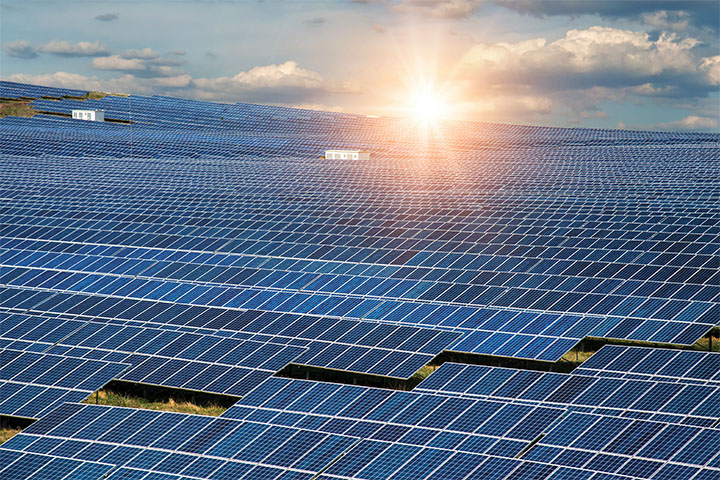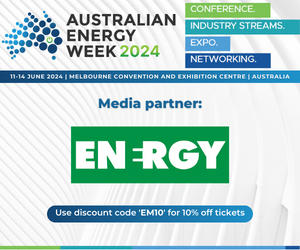With the Australian Energy Market Operator (AEMO) forecasting that as much as 75 per cent of Australia’s energy could be provided by wind and solar generation by 2025, actions need to be taken to ensure their full potential can be realised and system security maintained.
To address these challenges and provide a roadmap forward, AEMO has released the Renewable Integration Study (RIS), the first stage of a multi-year plan to maintain system security in a future National Electricity Market (NEM) with a high share of renewable resources.
Focusing on the time period up to 2025, the RIS evaluates the technical challenges associated with reliance on high levels of renewable energy resources and the actions that must be taken. The findings and actions in the report reflect the AEMO’s day-to-day experience operating the NEM, and the results of extensive modelling and analysis.
A low-cost and reliable NEM
In its Integrated System Plan (ISP), AEMO identified a number of futures for the NEM that maximise consumer benefits at the lowest system cost, while meeting reliability, security and emissions expectations. Under every scenario, the NEM’s least-cost future involved large increases in renewable generation with dispatchable generators, large-scale and distributed energy storage, demand side participation and sector coupling – such as with gas and transport.
The RIS takes these projections as given and investigates in detail the challenges in the short term of maintaining power system security while operating this resource mix at very high instantaneous penetrations of wind and solar generation. It recommends actions and reforms needed to keep operating the NEM securely, now and as the power system transitions.
It builds on international approaches to operating power systems with high penetrations of wind and solar generation, while recognising Australia’s unique challenges, and identifies opportunities for Australia to continue developing world-leading expertise. The goal is to identify opportunities to break down barriers and maximise value for consumers from the NEM’s growing renewable fleet.
AEMO’s Managing Director and CEO, Audrey Zibelman, said, “The Renewable Integration Study makes it clear that today’s operating approaches and market frameworks are becoming less effective as the NEM continues its transformation to world-leading levels of renewable generation.
“Australia already has the technical capability to safely operate a power system where three quarters of our energy at times comes from wind and solar energy generation.
“However, to do so requires changes in our markets and regulatory requirements, otherwise, AEMO will be required to limit the contribution of these wind and solar resources to 50 or 60 per cent of electricity supply at any point in time, even though they are the lowest cost way of providing electricity.”
A changing NEM
The NEM already has 17GW of wind and solar capacity installed, with some parts of the NEM having among the world’s highest levels installed, including one of the highest levels of residential solar.
By 2025, it is expected to have transformed even further. AEMO’s Draft 2020 ISP forecasts, in its central scenario, that by 2025 there will be 27GW of wind and solar – both utility solar and distributed PV – generation capacity in the NEM. This scenario does not yet take the effects of COVID-19 into account.
RIS analysis found that, in the next five years:
- The NEM will continue its transformation to world-leading levels of renewable generation. This will test the boundaries of system security and current operational experience.
- If the recommended actions are taken to address the regional and NEM-wide challenges identified, the NEM could be operated securely with up to 75 per cent instantaneous penetration of wind and solar.
- If the recommended actions are not taken, the identified operational limits will constrain the maximum instantaneous penetration of wind and solar to between 50-60 per cent in the NEM.
Beyond 2025, AEMO has not identified any insurmountable reasons why the NEM cannot operate securely at even higher levels of instantaneous wind and solar penetration, especially with ongoing technological advancement.
Recommended actions and identifying challenges
Based on the learnings contained in the RIS, AEMO recommends the following actions are prioritised, agreed and implemented well ahead of 2025:
- Continue the design and deployment of the Energy Security Board’s (ESB) Market 2025 reform program with particular focus on ahead and system security services markets
- New standards and settings to maximise the potential contribution of distributed solar PV
- Construction of required transmission resources identified in the ISP
“Given the pace and complexity of change in the NEM, the study highlights the need for flexible market and regulatory frameworks that can adapt swiftly and effectively as our understanding of the changing power system evolves. This is going to be particularly important in the areas of technical standards and frameworks for sourcing essential system services,” Ms Zibelman said.
The report highlights five focus areas and the associated key challenges and actions, including timing and status:
- Secure system operation with increasing uncertainty and complexity
- Managing the system impact of the NEM’s world-leading and growing levels of distributed solar PV
- Managing frequency
- Maintaining system strength
- Keeping balance in a system in which energy supply is increasingly variable and uncertain
Working with stakeholders to support the transition
In recommending actions and highlighting positive potential outcomes, AEMO does not underestimate the extent of work that will be required to successfully adapt the NEM.
“The findings of this report have far-reaching implications for the energy sector in Australia now and in the coming years,” Ms Zibelman said.
“AEMO looks forward to working closely with stakeholders to explore the findings and actions arising from this report and develop an integrated program of priority focus areas to support the energy transition.”
With the RIS, AEMO aims to provide foundational engineering perspectives for the ISP, Energy Security Board (ESB), industry, market institutions, and policy-makers. Its technical perspectives will ideally inform future investments, regulations and market designs to securely operate the NEM power system with very high instantaneous penetrations of wind and solar generation.
Read AEMO’s full Renewable Integration Study here.


















